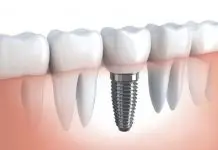Varicose veins are veins that become enlarged and twisted, often changing color and appear appear blue or purple. The veins also bulge from the surface of the skin, creating uneven surface of the skin. Most commonly the varicose veins appear in legs, however they can also appear in other areas of the body such as pelvic area or the face.

Why varicose veins manifest?
Varicose veins occur when the valves in the veins that help blood flow back to the heart become weakened or damaged. This causes blood to pool in the veins, which can lead to swelling, discomfort, and a feeling of heaviness in the legs. Varicose veins may also cause skin discoloration, itching, and in severe cases, ulcers.
Risk factors
Risk factors for varicose veins include age, genetics, pregnancy, obesity, and a sedentary lifestyle. Treatment options for varicose veins include lifestyle changes (such as regular exercise and weight management), compression stockings, sclerotherapy, and surgery.
How to treat varicose veins
Varicose veins can be treated in multiple ways, depending on the severity of the condition. Some of the most common treatment options include:
- Lifestyle Changes: Making certain lifestyle changes can help improve blood flow and reduce the severity of varicose veins. Examples include regular exercise, maintaining a healthy weight, avoiding prolonged periods of standing or sitting, and elevating the legs when sitting or lying down.
- Compression Stockings: Compression stockings are tight-fitting stockings that apply pressure to the legs, helping to improve blood flow and reduce swelling.
- Sclerotherapy: Sclerotherapy involves injecting a solution into the affected veins that causes them to collapse and eventually fade away. This is a minimally invasive procedure that can be performed in a doctor’s office.
- Endovenous Laser Treatment (EVLT): EVLT involves using a laser to heat and collapse the affected vein, which is then absorbed by the body.
- Surgical Procedures: In severe cases, surgery may be necessary to remove the affected vein.
It’s important to note that while these treatments can help reduce the appearance and discomfort of varicose veins, they may not prevent the development of new ones. Maintaining a healthy lifestyle and following a doctor’s recommendations can help prevent further complications.













































